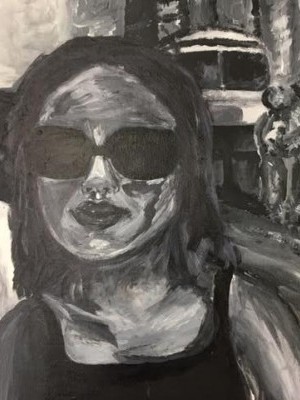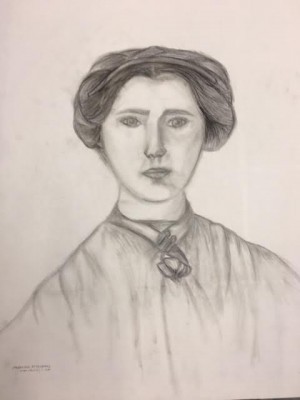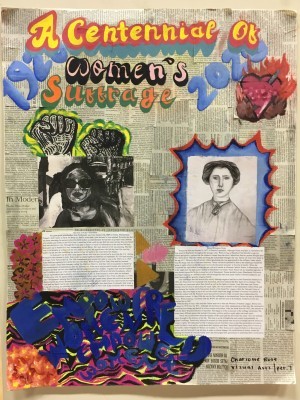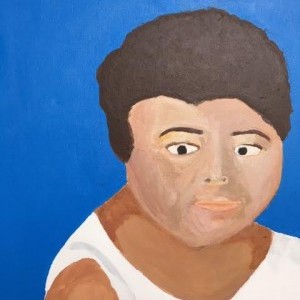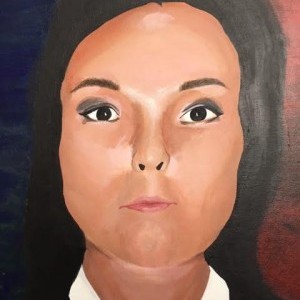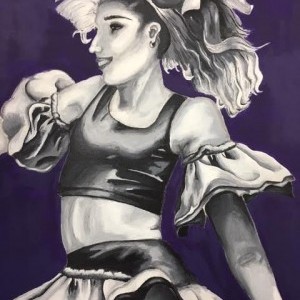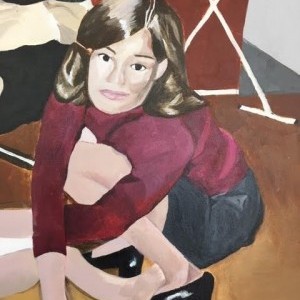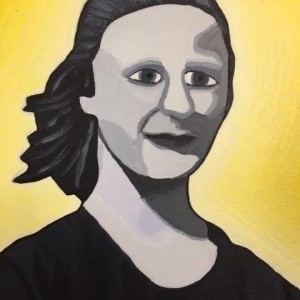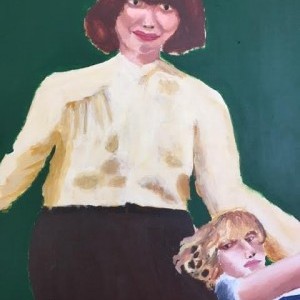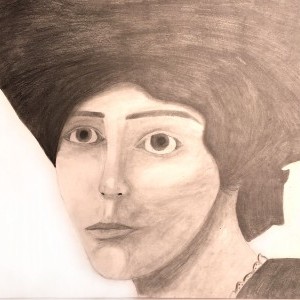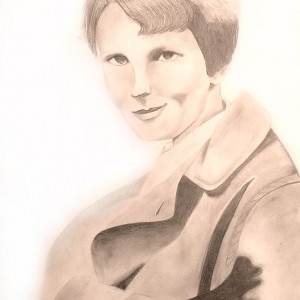Charlotte Goldberg
Immaculate Heart High School | Los Angeles, CA | 9-12th Grade
Inspirational Family Member
Kate Fehlhendler
My great great grandmother Kate Fehlhender was born January 3rd, 1889 in Dubne, Malopolskie, Poland. I don’t know a whole lot about my family on my dad’s side because he was adopted. Recently my dad has been searching for answers about his birth mother so coincidentally he has been in contact with a woman who studies and works in the DNA field. I asked her if she could try and find the exact woman from my family that was the first to vote. Through this I was able to receive a bunch of information on her and her life story.
Kate grew up in Poland in a very conservative Jewish family. Her main passion in life was painting. She had very vivid dreams as a child, but she was unable to explain the significance she felt they had. Her one true outlet was art and she would beg her parents to buy her paint so she could draw her dreams.
As Kate grew up she met a man named Morris who was also Jewish but he was from the U.S. visiting Poland for the summer to study. Kate ended up marrying Morris Haiblum on September 18, 1916 and moving to Kings, New York in the US. The 19th Amendment gave women the right to vote in the 1920’s so in 1924 Kate Haiblum registered to vote for the very first time. While living in New York, Kate and her husband Morris owned a small shoe company called The Haiblum Shoe Co. And they were even granted a charter by the commissioner of corporations after the Volstead Act. Kate was a very powerful woman who believed in equality and that was her main teaching that she passed down to her children. Together Kate and her husband had 5 children and one of her sons went on to become the president of B’nai B’rith Hillel Foundation, which was an organization that worked to end anti semitism in the US. Kate became a widow after her husband, Morris being only 54, passed away of pneumonia in Coney Island hospital in New York on february 13, 1934.
After her husband’s passing Kate went back to painting and she created many pieces that revolved around the discrimination she faced. Because she was Jewish and her son was the leader of a very controversial movement Kate and her family had to stay extremely brave and strong through these hard times. Eventually Kate made a living off of selling her paintings to people all around Brooklyn in New York. Kate eventually died on January 24, 1985 in Brooklyn, King County, New York.
Historical Figure I Admire
Teresa Billington-Greig
Teresa was born on October 15, 1877 in Preston Lancashire, England. Although Teresa was born in Lancashire she was raised in Blackburn throughout her teenage years. While living in Blackburn she attended a convent school and quickly realized that she wanted to depart from the strict Catholicism that her parents brought upon her. Teresa knew what she wanted and being the independent teenager she was, Teresa ran away from home at the age of 17. Because she left school without graduating she was apprenticed to the millinery trade, which was the design and sale of hats and headwear. Teresa was not too satisfied by this so she challenged herself by going to night school so that she could receive the education necessary to become at teacher. When she completed her night school courses she got a job as a teacher at a Roman Catholic School in Manchester, and in her spare time she kept up her studies at Manchester University. Since Teresa was an outspoken agnostic, it was almost impossible for her to keep her job at Manchester. Teresa decided to leave Manchester University and began teaching at a different school which brought her into even more conflict with her employees and peers because of her agnostic religious beliefs.
The challenges that she faced at this school, although negative led her to meet Emmeline Pankhurst in 1903. As Teresa built her friendship with Emmeline, she soon realized that they had a lot in common. They were both very passionate about their beliefs as well as the rights of women. Later that same year Teresa became very involved in advocating for equal rights, she was a member in the Independent Labour Party and soon became the founder of the Manchester branch of the Equal Pay League within the National Union of Teachers. She soon began to travel all over the world inspire and speak on behalf of women everywhere. In 1904 she worked with the Women’s Social and Political Union to create a London-based organization for independent women. In June 1906 she was the first suffragette to be arrested and Teresa was sent to Holloway Prison. While working in Scotland with the WSPU she met her soon to be husband, Frederick Lewis, and married him in 1907.
With the help of many other activists Teresa went on to form the Women’s Freedom League. Teresa soon resigned in 1910 from the WFL. Although she did not join any other organizations at that time she continued to spread her knowledge and beliefs to young women everywhere. After her break from the WFL, she returned to work for their Women’s Electoral Committee. She began to write on account of the suffrage movement. She wrote many different pieces that included feminism, politics, equal rights and much more.
Teresa was so passionate about the equality of the sexes and she showcased her many views on multiple topics throughout the entirety of her life. She took on a role of leadership and worked independently on women’s suffrage, Teresa truly believed in women in a time period where not a lot of people showed interest in women’s rights. She dedicated her life to helping women find their voice so that later generations of women could find their voices and be vocal about their opinions and ideas. Teresa Billington-Greig died of cancer at the South London Hospital for Women on October 21, 1964. Teresa never ceased to believe in the power of women and she believed it was her duty to make a cultural change. Her contribution to society created an uprising for women all over the world, and it has encouraged later generations to understand their worth and to stand up for their rights as women.
What the Project Means to Me
After researching and understanding the story of Kate Fehlhendler, I have realized how important it is to be aware of the past, especially since the past indicates the answers of your heritage. When my great great-grandmother was growing up she faced all types of discrimination, whether it pertained to her religion, or because she was a woman. When I look back on all women in history I realize how lucky I am to be a part of this brave and powerful movement towards complete and utter equality for women. I can’t even express how grateful I am for the past because it is what allows me to be as free and lucky as I am today. I was especially excited to learn about my dad’s side of the family because I always felt like there was a missing part of me that I was so unconnected with and I have yearned to learn more about my ancestors since the day I found out my dad was adopted. It is so difficult to fathom the harsh conditions that my great great grandmother would have lived through in Poland, being a jew, and the fact that she was able to gain her own strength and voice and move to the United States shows how powerful she was. She rejected all social norms and protested through her own creative outlet, art.
By being one of the first generations of women to vote, Kate valued the importance of her voice and opinion, not only in politics but in her own society. Voting is of such importance because it gives you the chance to give a say in how your society is looked at and treated. It is important to vote at a local level because local policies affect you and your peers in daily life. It also gives you the chance to influence the policy-making decisions that you are passionate about. Suffragettes fought for the right to vote at all of these level because the most important political right outside of the original Bill of Rights is to vote and voice your opinion through your state and in your society. The voting rights acts in the 1960’s truly helped establish strong federal protections for the freedom to vote because it limited the discriminatory election policies and practices.
Through all of these challenges women were able to come together and rise up while using their strength and powerful voices to ensure the equality and value of their opinion. This is something that I will greatly admire and I will be forever grateful for not only my great great-grandmother, but all women of the past, they all have made a contribution one way or another. My voice and the voice of the women in this world today come from the voices of our ancestors and it continues to inspire me to work for what I believe in and stay strong and powerful to fight for my rights as a woman.
Explore the Archive
More From This Class
Click on the thumbnails below to view each student's work.Deadline Extended
There's still time to join Women Leading the Way.
Become a part of our storytelling archive. Enroll your class today.
Join the Project

